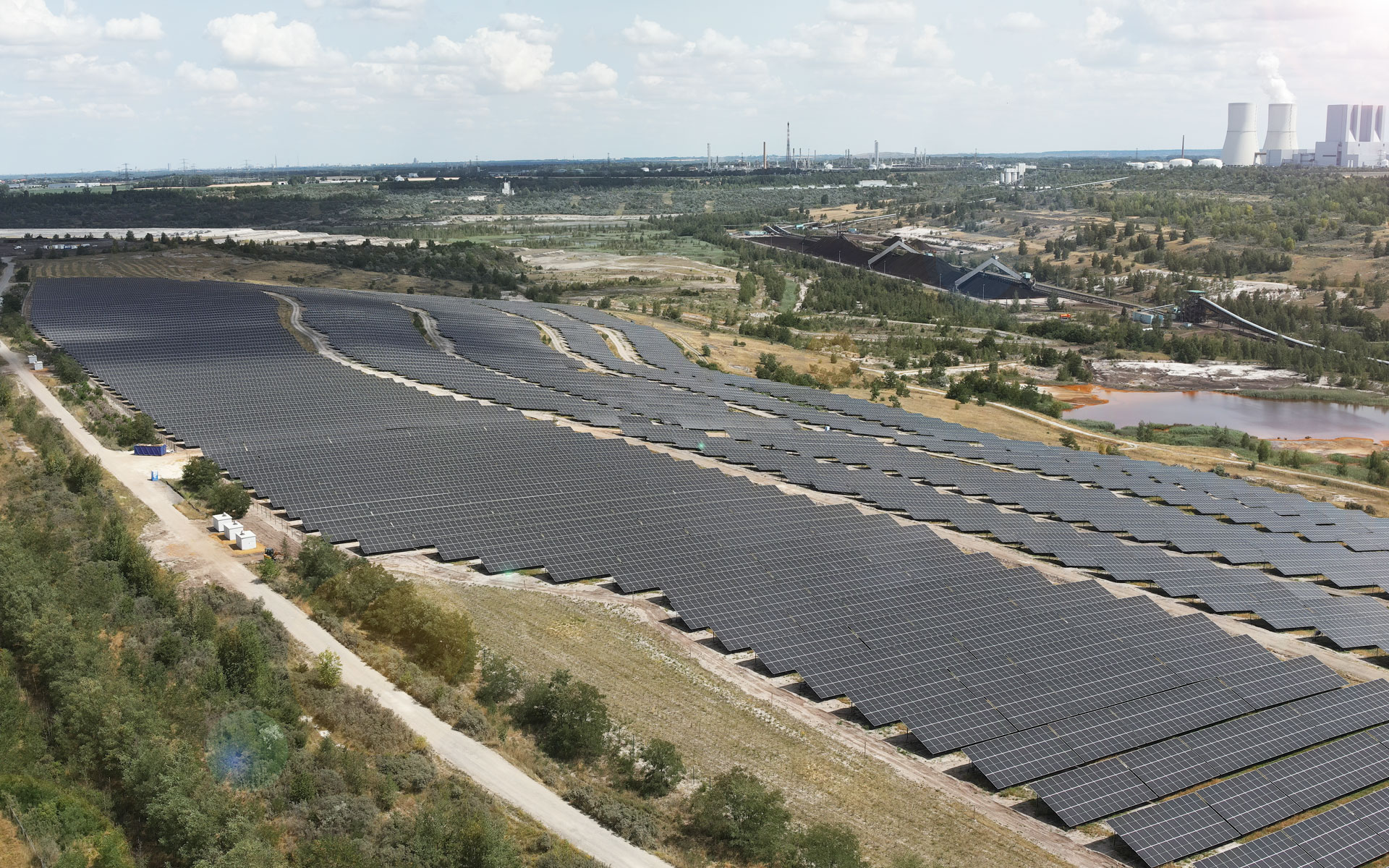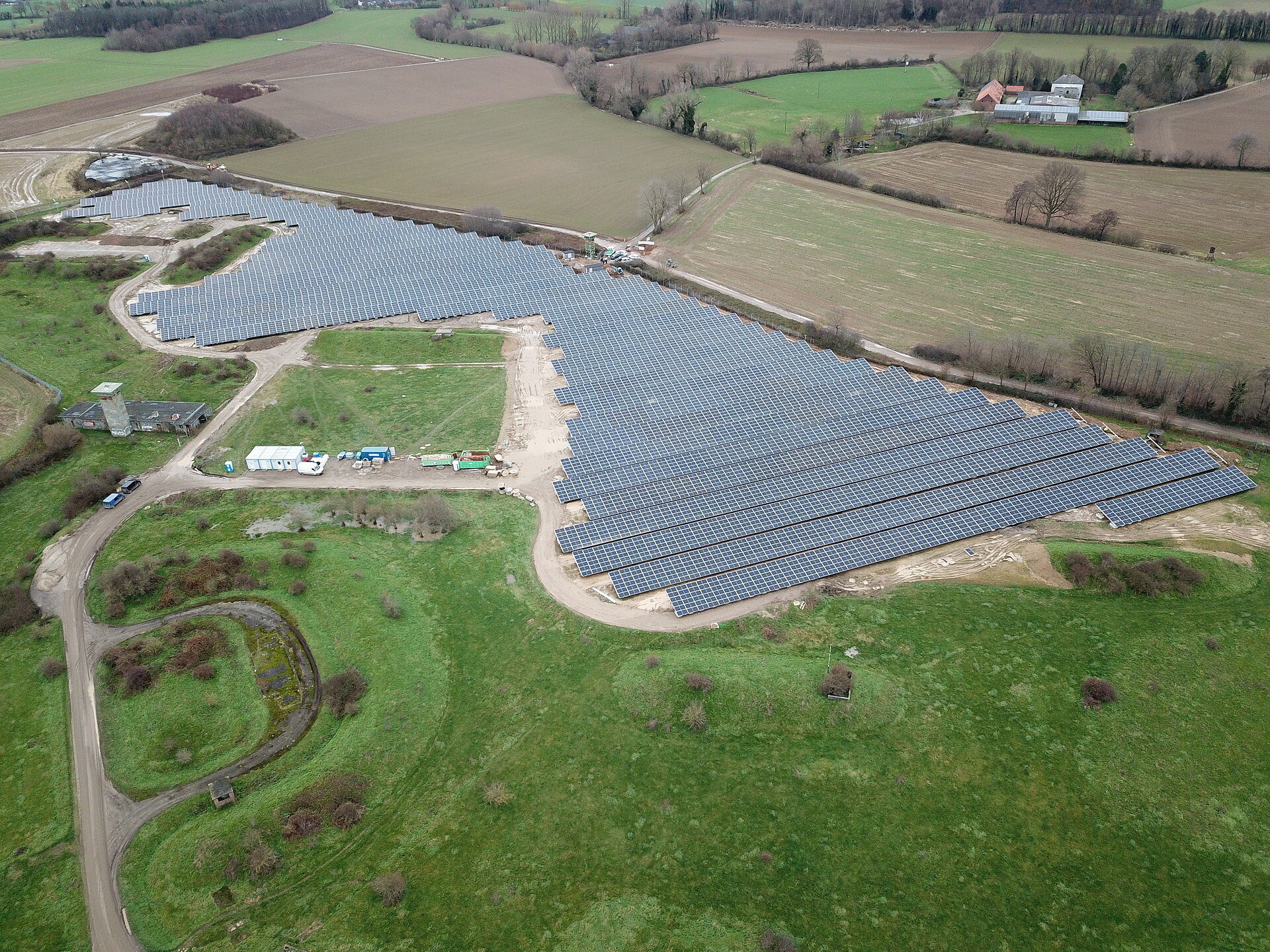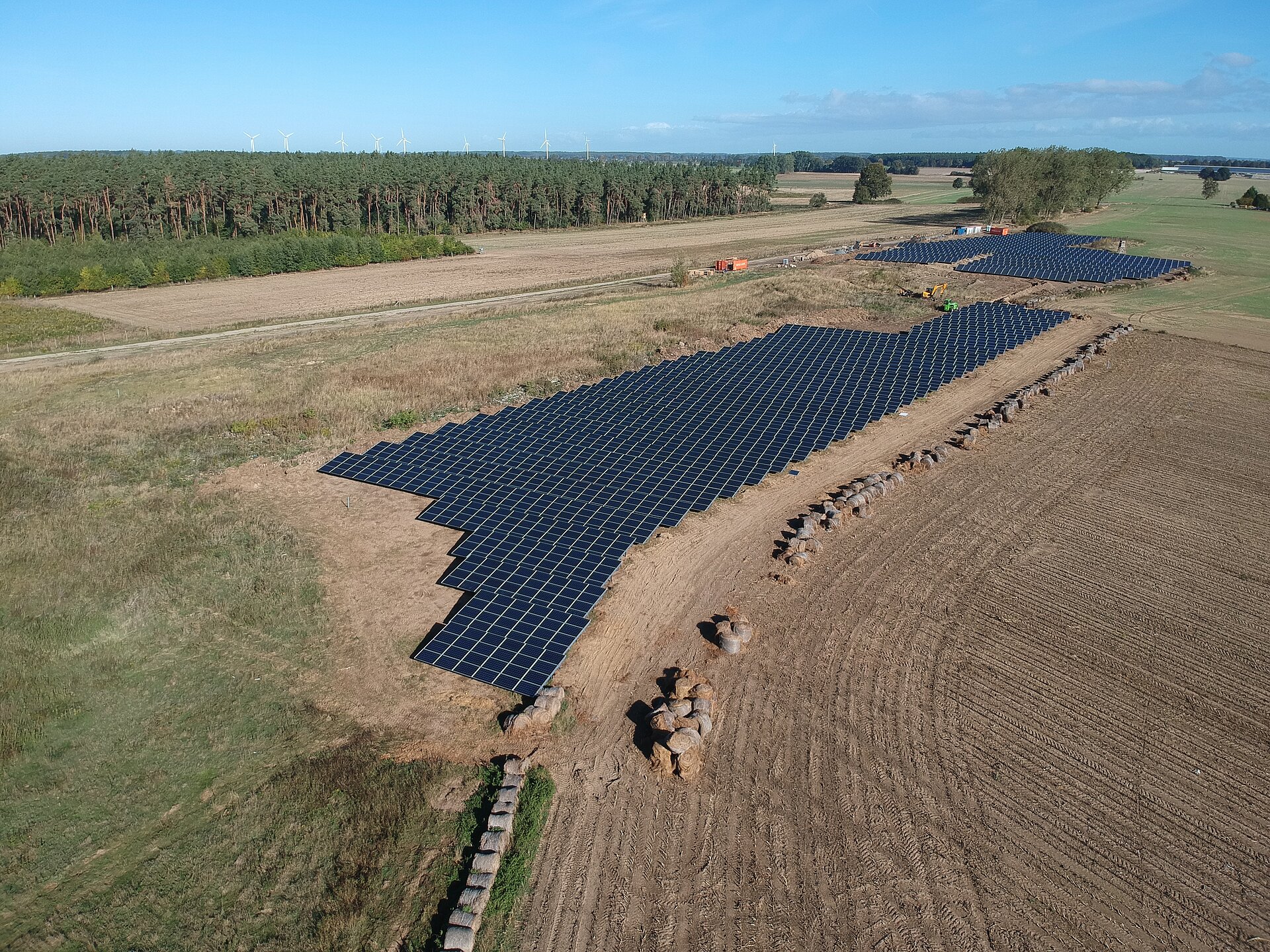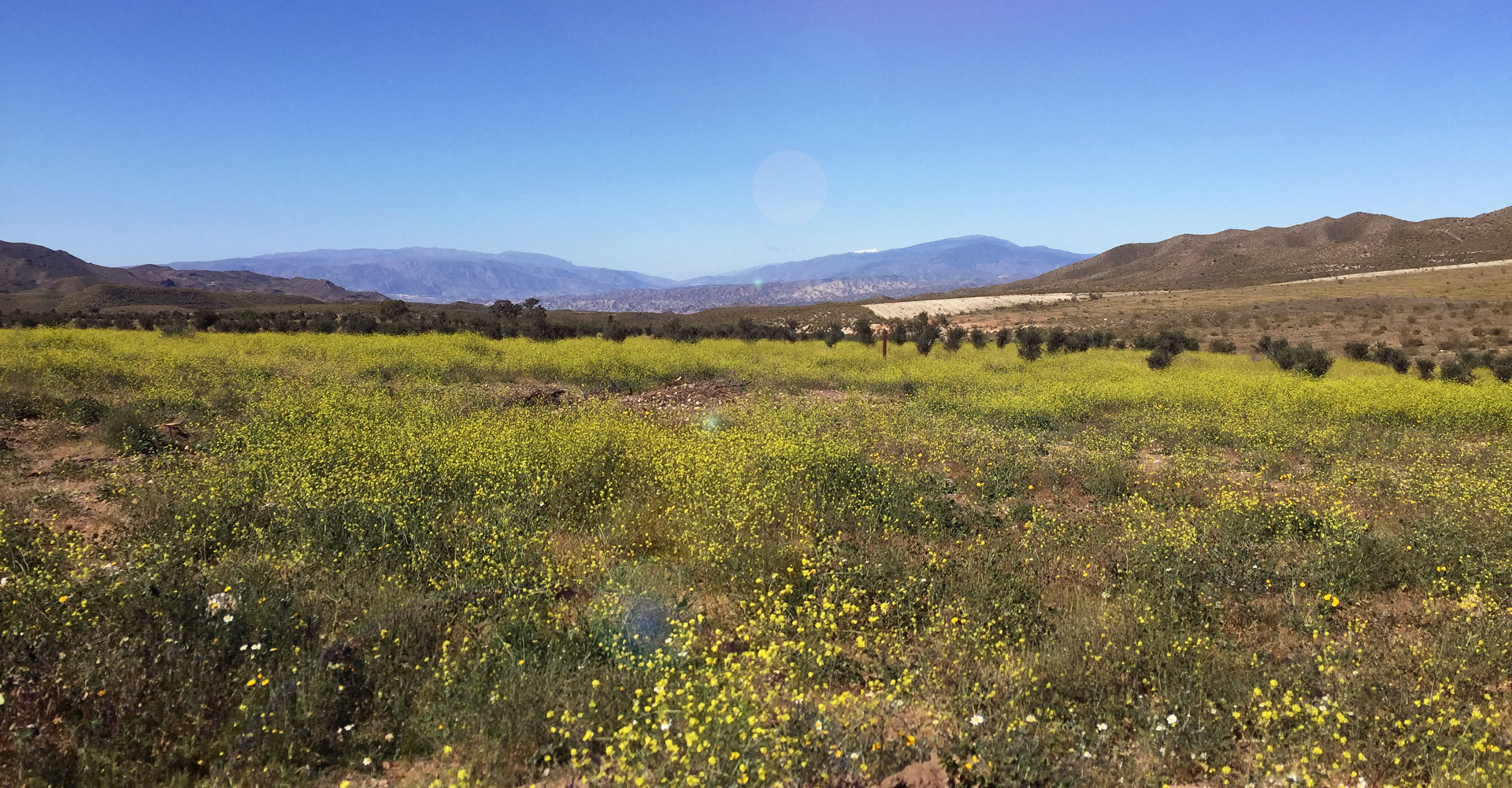
Suitable areas for solar parks
Is your open space suitable for a solar park?
In principle, ground-mounted PV systems can be installed on almost any type of land. However, some open spaces are more suitable for a solar park than others due to geographical conditions. And only certain locations can be subsidised under the Renewable Energy Sources Act in Germany from 2023. These are sites where a solar park would pose little competition to other land uses. This article will help you to find out how suitable your property is for ground-mounted photovoltaics based on various aspects.
1. No solar parks in protected areas
2. Consideration of the topography
3. PV systems on motorways and railway lines
4. Funding also for disadvantaged areas
5. Installing solar systems on a conversion site
6. Utilise the same area twice with Agri-PV
7. Solar installations above car parks and moors
8. Distance from solar parks to residential buildings
1. No solar parks in protected areas
In principle, all open spaces are suitable for development with PV systems, provided they are not classified as particularly valuable in terms of nature conservation. Solar installations are therefore not possible on land in nature conservation areas or flood plains. An exception to this are solar parks in drinking water protection zones II and III, which can be realised subject to strict environmental requirements. The geographical suitability and legal eligibility for authorisation of such areas must be examined by experts.
2. Consideration of the topography
Topography also plays a role in system planning: the area suitable for photovoltaics should be free of shading. Slopes on hills and mountains should ideally face south if they are to be considered as a location for a solar park. However, a ground-mounted PV system can also be erected on a north-facing slope. In this case, however, a greater distance between the modules must be taken into account during planning in order to avoid performance losses due to shading. A flat surface has the advantage that the modules are evenly aligned, which simplifies planning and installation. Maintenance work can also be carried out more easily at a later date.
3. PV systems on motorways and railway lines
In order to accelerate the energy transition, the legislator has made a number of key changes to the EEG 2023 (Renewable Energy Sources Act in Germany). It contains new subsidy regulations for the construction and operation of solar installations: EEG remuneration is now possible for significantly more areas than before. For example, the corridor along motorways and railway lines in which systems are eligible for subsidies has been extended from 110 metres wide to 500 metres. This means that significantly more landowners can benefit from leasing income for areas along motorways and railway lines if they lease them for the construction of a solar park.
Important to know: The legislator has introduced a privileged status in building planning law for ground-mounted photovoltaics. Along federal motorways and double-track railways, a simple building permit is sufficient at a distance of 200 metres.
Where exactly a solar park can be built along other transport routes or on other municipal land is decided by the respective local authority. They designate such locations as "special photovoltaic areas" in their land use plans.
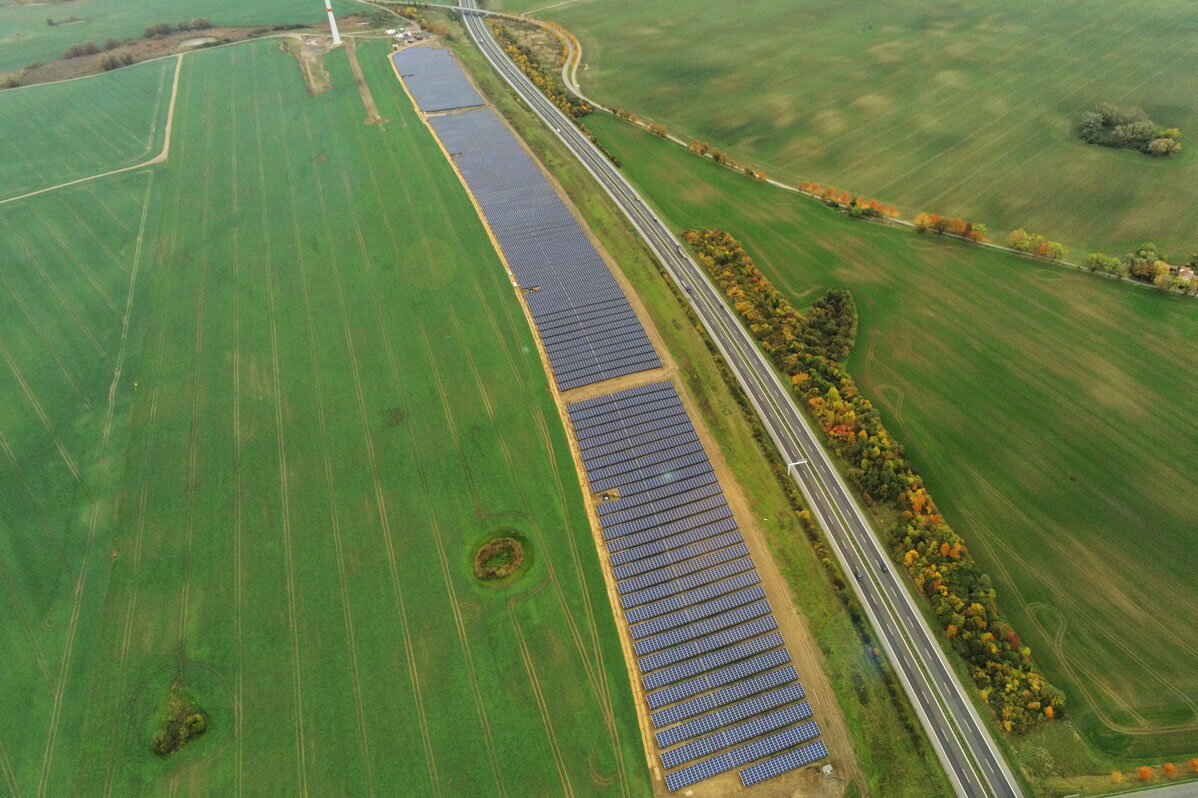
Solar park in Falkenwalde along the A20 motorway
4. Funding also for disadvantaged areas
EEG remuneration is also available for electricity generation in so-called "disadvantaged areas". These are areas in which agriculture is particularly difficult or expensive - for example due to geographical or climatic conditions.
5. Installing solar systems on a conversion site
Conversion sites are areas that lie fallow because they are no longer needed for their original purpose. Examples include areas formerly used for military purposes, landfill sites or industrial wasteland. Such areas can be used as a site for a solar park as they are classed as EEG areas. According to the Renewable Energy Sources Act, plant operators receive EEG subsidies for the solar power generated there.
6. Utilise the same area twice with Agri-PV
In order to minimise the impact of photovoltaic systems on the environment and agriculture, ecologically valuable areas and high-yield fields should be excluded from the use of solar modules as a matter of principle. With the agrivoltaic concept, however, it is now possible to utilise land twice: While electricity is generated via the solar modules, farmers can continue to grow crops or keep animals underneath or next to them. Such agri-voltaic systems are considered "special solar systems" in the EEG 2023 funding catalogue.
The prerequisite for funding is that agriculture remains the main use and that electricity generation is only an ancillary use. Further requirements must also be met for the EEG remuneration. In view of the increasing competition for land, agrivoltaics has great po-tential: land consumption is minimised and farmers can "harvest" twice on the same area.
7. Solar installations above car parks and moors
In addition to agri-PV, three other forms of "special solar systems" were included in the subsidy programme with the 2023 EEG amendment:
- Car park PV: Here, a large car park is roofed over with elevated solar modules.
- Moorland PV: Elevated solar systems on drained moorland soils that are per-manently rewetted when the system is installed.
- Floating PV systems: Are installed on artificial or heavily modified bodies of water (e.g. on lakes, rivers, canals or in sea bays).
Special requirements apply to the location and operation of these systems.
8. Distance from solar parks to residential buildings
In addition to the categorisation of the EEG, minimum distances from residential buildings and roads must also be observed when planning a PV system. The regulations vary depending on the federal state and may change over time. The respective state building regulations stipulate the distances that must be maintained from neighbouring properties, residential buildings, roads, etc. when constructing ground-mounted systems.
In addition, local authorities have often defined their own rules for the minimum distance to residential buildings. Their aim is to ensure acceptance of renewable energy systems among the population by avoiding potential restrictions on the quality of living. Property owners should therefore find out about the relevant rules and criteria catalogues for ground-mounted PV systems from their local authority or municipal administration at an early stage.
9. Connection to the power grid
The distance to the nearest grid connection point must also be checked when planning a ground-mounted PV system. For smaller ground-mounted PV systems with an output of up to 10 megawatts (MW), a connection to the medium-voltage level is sufficient. Cor-responding grid connection points are also available in rural areas, usually within a short distance, although the availability of connections must be checked here. Larger solar parks, on the other hand, must be connected to the high-voltage grid (110 kV). This grid is more extensive than the medium-voltage grid. Possible grid connection points can therefore be far away, and a connection is then associated with higher costs. These grid connection costs are generally borne by the system operator.
Conclusion
Solar parks are possible in many locations. Open spaces suitable for photovoltaics are primarily contaminated, already sealed or low-quality soils that are less suitable for food production. However, electricity can also be generated on fertile soils or land used for other purposes using modules mounted high on the ground, resulting in dual utilisa-tion of the land. We have summarised the most important criteria for a suitable location in the following overview.
Suitable open spaces - an overview:
Sites suitable for photovoltaics should fulfil the following requirements:
- High solar radiation, little shading
- As flat a surface as possible
- Proximity to electricity infrastructure
Attractive areas due to EEG remuneration:
- Conversion or brownfield sites
- verges of motorways or railways
- Less-favoured agricultural areas
- Agricultural land if primary use is retained (Agri-PV)
- Car parks
- Drained moors that are rewetted
- Artificial or heavily modified water body
Picture: Iqony Sens
Published: 04.09.2024
Free area available?
We lease your area and implement photovoltaic systems.
Do you own suitable land for generating electricity and would like to lease your property for the construction of a solar park? Do you have questions about photovoltaics in general?
Talk to us, we will be happy to help you!

